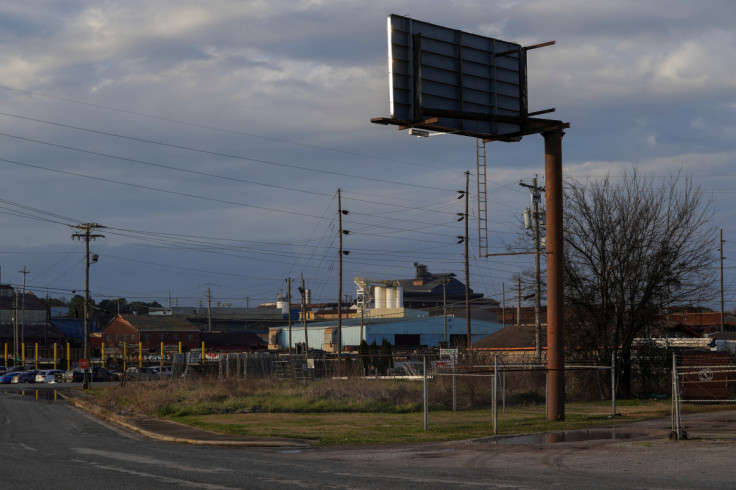US Consumer Sentiment Deteriorates In March, Inflation Expectations Retreat

U.S. consumer sentiment fell for the first time in four months in March, but households expected inflation to subside over the next year and beyond, which could offer some relief to the Federal Reserve as it confronts financial market instability.
The ebb in sentiment reported by the University of Michigan on Friday occurred before the recent collapse of two regional banks, which sparked fears of contagion in the banking sector. Worries about a banking crisis against the backdrop of data this month showing a still-tight labor market and stubbornly high consumer prices in February have put the Fed in a tight spot.
"Inflation expectations are falling, giving the Fed some flexibility in the future path of rate hikes," said Jeffrey Roach, chief economist at LPL Financial in Charlotte, North Carolina. "The Fed now has two serious concerns over financial stability and persistent inflation."
The University of Michigan's preliminary March reading on the overall index of consumer sentiment came in at 63.4, down from 67 in the prior month. Economists polled by Reuters had forecast a preliminary reading of 67.0. Joanne Hsu, the director of the University of Michigan's Surveys of Consumers, said 85% of the interviews for the report had been completed prior to the collapse of Silicon Valley Bank.
Economists expect sentiment to deteriorate further when the final survey is published later this month. The California bank's collapse, together with the failure of Signature Bank in New York and problems at Credit Suisse, have triggered a global stock market sell-off.
The decline in sentiment was concentrated among lower-income, less-educated and younger consumers, as well as consumers with the top tercile of stock holdings. While the correlation between consumer sentiment and spending is weak, economists expect tighter financial conditions will undercut consumption and push the economy into recession.
The risks to the economic expansion are rising. A separate report from the Conference Board showed its Leading Economic Index, a gauge of future economic activity, dropped for an 11th straight month in February.
"The leading index is far from a perfect guide, but on past form it points to a roughly 1.0% contraction in GDP by the second half of the year," said Gurleen Chadha, a U.S. economist at Oxford Economics in New York.
The University of Michigan survey's reading of one-year inflation expectations fell to 3.8%, the lowest since April 2021, from 4.1% in February. Its five-year inflation outlook dropped to 2.8%, falling below the narrow 2.9%-3.1% range for only the second time in the last 20 months.
Financial markets expect the Fed to raise interest rates by another quarter of a percentage point next Wednesday, according to CME Group's FedWatch tool. Banking sector instability has, however, prompted some speculation that the central bank could pause its most aggressive monetary policy tightening campaign since the 1980s.
The Fed has raised its benchmark overnight interest rate by 450 basis points since last March from the near-zero level to the current 4.50%-4.75% range.
U.S. stocks were trading lower. The dollar slipped against a basket of currencies. U.S. Treasury prices rose.
MANUFACTURING OUTPUT RISES
While other data on Friday showed production at factories edged up in February and output in the prior month was stronger than previously thought, manufacturing continued to struggle under the weight of higher borrowing costs.
Manufacturing output gained 0.1% last month, the Fed said. Data for January was revised up to show production at factories increasing 1.3% instead of the previously reported 1.0% rise. Output fell 1.0% on a year-on-year basis in February and was on track to contract for a third straight quarter.
Manufacturing, which accounts for 11.3% of the U.S. economy, contracted in the third and fourth quarters of 2022 as higher rates undercut demand for goods, which are typically bought on credit. Spending is also shifting away from goods to services, while the dollar's past appreciation and sluggish global growth are curbing exports. Restocking by businesses is also slowing.
The Institute for Supply Management's measure of national manufacturing activity has contracted for four straight months. Though activity appeared to stabilize at weaker levels in February, a rebound is unlikely. Regional Fed surveys this week showed manufacturing in New York state and the mid-Atlantic area remained depressed in March.
Last month, there were increases in the output of consumer goods, defense and space equipment and materials. But production of business equipment, construction supplies and business supplies declined. Durable manufacturing production nudged up 0.1%, while nondurable manufacturing output climbed 0.2%.
Mining output fell 0.6%, with oil and gas well drilling dropping 3.1%. Mining production had increased 2.0% in January, ending three straight monthly declines.
Utilities production rebounded 0.5% after plunging 10.1% in January as unseasonably mild temperatures curbed demand for heating. The small gain in manufacturing, together with the rise in utilities, offset the drop in mining, leaving overall industrial production unchanged last month. Industrial output rose 0.3% in January.
(Graphic: Industrial production -

)
Capacity utilization for the manufacturing sector, a measure of how fully firms are using their resources, dipped 0.1 percentage point to 77.6% in February. It is 0.6 percentage point below its long-run average. Overall capacity use for the industrial sector was unchanged at 78.0%. It is 1.6 percentage points below its 1972-2022 average.
"At this point we can be fairly certain that the manufacturing sector is in recession," said Conrad DeQuadros, senior economic advisor at Brean Capital in New York.
© Copyright Thomson Reuters 2024. All rights reserved.





















